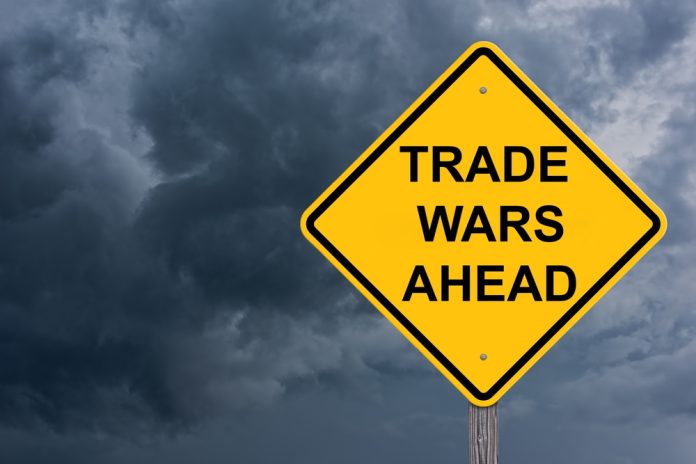
President Trump has dramatically escalated the US-China trade war by imposing 125% tariffs on Chinese imports, with Beijing vowing to “fight to the end” as global markets brace for the fallout.
Key Takeaways
- Trump announced a 125% tariff on Chinese goods while pausing tariffs for 75+ countries that didn’t retaliate against US duties.
- China has already increased tariffs on US goods to 84% and added 11 American companies to an “unreliable entities” list.
- The US exported $199 billion to China last year, while China exported $463 billion to the US, creating an uneven battlefield.
- Treasury Secretary Scott Bessent indicated the tariffs were intended to bring countries to the negotiating table.
- The escalating dispute threatens global markets, supply chains, and could increase prices for American consumers.
Trump’s Strategic Tariff Approach
President Trump’s administration has implemented a dual approach to global trade tensions, offering a 90-day pause on tariffs for over 75 countries that chose not to retaliate against US duties, while significantly increasing levies on China to 125%. This targeted approach differentiates China from other trading partners who have sought negotiations rather than retaliation. Treasury Secretary Scott Bessent clarified that the ultimate goal of these tariffs is to bring countries to the negotiating table for more favorable trade deals.
The President defended his decision to pause tariffs for cooperative nations, explaining that market reactions had become overblown. “I thought that people were jumping a little bit out of line. They were getting yippie, you know, they were getting a little bit yippie, a little bit afraid,” Trump stated, adding, “and that’s what I did with China, because they did retaliate.”
China’s Firm Response
China’s reaction to the increased tariffs has been swift and uncompromising. The Chinese Ministry of Commerce issued a stark warning, stating they are ready to counter American economic restrictions with their own measures. The ministry previously imposed tariffs of 84% on US goods and placed 11 American companies on an “unreliable entities” list, restricting their ability to do business in China. Additionally, Beijing has filed challenges against US tariffs at the World Trade Organization, signaling its intention to fight on multiple fronts.
In a concerning development, Chinese authorities have advised their citizens about traveling to the United States amid escalating tensions. This move signals that the dispute is extending beyond trade into broader diplomatic relations. The Trump administration has responded firmly to China’s countermeasures, with spokesperson Karoline Leavitt making it clear that retaliation would be met with even stronger action.
Economic Impact and Market Reactions
The trade dispute has already created ripples across global markets and affected major American businesses. Walmart has withdrawn its first-quarter operating income outlook due to tariff uncertainties, while major US pharmaceutical companies have seen their shares decline. The unbalanced trade relationship—with the US exporting $199 billion to China last year while importing $463 billion—means American consumers could face higher prices on everyday items like mobile phones, computers, toys, and clothing.
China’s Commerce Ministry has warned that US tariffs could lead to financial market volatility, increased inflation, and potentially trigger an American economic recession. The European Chamber of Commerce in China has also criticized the US tariffs, noting they impact European companies operating in China and increase operational costs throughout global supply chains. Additionally, the ongoing dispute has delayed negotiations over TikTok, with potential sales to American owners now in jeopardy.
Strategic Implications
The escalating trade war goes beyond immediate economic consequences, potentially reshaping global supply chains and international alliances. Major US exports to China include soybeans, aircraft, pharmaceuticals, and semiconductors—all sectors that could suffer from prolonged tension. The European Union has also entered the fray, imposing retaliatory tariffs ranging from 10% to 25% on American goods, complicating the global trade landscape.
As both economic superpowers dig in their heels, the prospects for a comprehensive trade agreement appear increasingly distant. With China vowing to “fight to the end” and the Trump administration determined to correct trade imbalances, consumers and businesses worldwide are bracing for continued market disruptions and price increases. The ultimate resolution may depend on which nation’s economy can better withstand the pressure of prolonged trade restrictions.
Sources:
- Stocks surge after 90-day pause announced for most countries
- Trump hits back with a 125% tariff in escalating trade war with China
- Trump Pauses Tariffs on Nations That Did Not Retaliate, Ups Chinese Tariffs to 125 Percent







